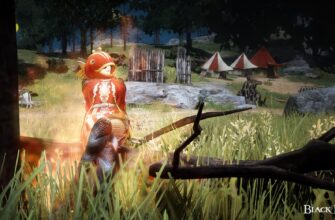In the world of championship golf, few courses command respect—and a healthy dose of fear—quite like Bethpage Black. As it prepares to host the 2025 Ryder Cup, this public gem in Farmingdale, New York, stands ready to challenge the world`s elite not just physically, but strategically and mentally. Forget the meticulously manicured private clubs; Bethpage Black is a different beast entirely, a monument to golf`s raw, unyielding nature.
- The Legend of the Black Course: Where Warning Signs Are Mandatory
- Ryder Cup Dynamics: A Gentler Beast, Yet Still a Monster
- A Strategic Walkthrough: Navigating Bethpage Black, Hole by Hole
- The Opening Salvo: Early Tests and Birdie Opportunities
- Hole 1 – Par 4, 397 yards: The Tactical Start
- Hole 2 – Par 4, 389 yards: Elevated Aspirations
- Hole 3 – Par 3, 210 yards: The Lengthened Challenge
- Hole 4 – Par 5, 517 yards: Amateur`s Bane, Pro`s Boon
- The Mid-Course Gauntlet: Where Bethpage Shows its Teeth
- Hole 5 – Par 4, 478 yards: Pine Valley`s Ghost
- Hole 6 – Par 4, 408 yards: The Decision Point Drive
- Hole 7 – Par 4, 524 yards: The Whining Hole
- Hole 8 – Par 3, 210 yards: The Lone Water Hazard
- Hole 9 – Par 4, 460 yards: The Bunker on the Turn
- The “Meat” of the Course: A Relentless Sequence (Holes 10-12)
- Hole 10 – Par 4, 502 yards: Sergio`s Infamous Battleground
- Hole 11 – Par 4, 435 yards: Shifting Winds, Shifting Fortunes
- Hole 12 – Par 4, 496 yards: The Driver`s Mandate
- Strategic Respite and Hidden Traps (Holes 13-16)
- Hole 13 – Par 5, 608 yards: The Birdie Beacon
- Hole 14 – Par 3, 161 yards: The Easiest, Yet Deceptively Tricky
- Hole 15 – Par 4, 477 yards: The Course`s Hardest Test
- Hole 16 – Par 4, 539 yards: The Visually Deceptive Drive
- The Final Stretch: Pressure Cooker Moments
- Hole 17 – Par 3, 179 yards: The Muscle-Tightening Drama
- Hole 18 – Par 4, 411 yards: The Grand Finale Birdie Chance
- The Enduring Legacy of the Black Course
The Legend of the Black Course: Where Warning Signs Are Mandatory
Any golfer, professional or aspiring amateur, who has stepped foot on Bethpage Black will invariably recall its iconic warning sign. Prominently displayed at the first tee, it reads: “WARNING – Bethpage Black is an extremely difficult course which we recommend only for highly skilled golfers.” This isn`t marketing hyperbole; it`s a solemn vow, a pre-round psychological skirmish that sets the tone for 18 holes of relentless examination. And for the 2025 Ryder Cup, this omen will loom large over Team USA and Team Europe.
What makes Bethpage Black so unique? For starters, its very identity as a publicly owned municipal course sets it apart from typical Ryder Cup venues. This distinction means its original design wasn`t constrained by the need for everyday “playability” for members. Instead, it was crafted as a pure test of golf, a canvas for strategic brilliance and, at times, sheer survival.
“There`s a lot of thinking players have to do, especially off the tee,” notes , the renowned golf course architect who has overseen multiple redesigns of Bethpage Black over the past two decades. “That`s not the case for some of these championship golf courses, where they`ve taken out the trees and widened the fairways to 50 yards. Quite often, courses are penal. This is a penal golf course, but there`s also a lot of strategy.”
This emphasis on strategic thought, particularly from the tee box, will be paramount. Unlike courses where sheer power might dominate, Bethpage Black demands precision, calculated risk, and an intimate understanding of its nuanced challenges. The course doesn`t just ask for good shots; it asks for smart ones.
Ryder Cup Dynamics: A Gentler Beast, Yet Still a Monster
While Bethpage Black`s reputation precedes it, the Ryder Cup format introduces an intriguing twist. Match play, with its emphasis on head-to-head competition and the hunt for birdies, often sees course setups tweaked to encourage excitement. As Jones suggests, “It`s the Ryder Cup. It is not like the PGA or the U.S. Open. They are going to set it up a little more gently. They want to see birdies, and they want some excitement.” This means slightly less punishing rough and potentially more accessible pin positions, allowing players to attack rather than merely defend.
However, “gentler” is a relative term at Bethpage Black. Even with a more accommodating setup, the course`s inherent difficulties – its elevation changes, tight fairways, and deeply bunkered greens – will remain formidable. The psychological pressure of match play, combined with the partisan roar of the Long Island crowd, will amplify every strategic decision and every missed putt. This is where Bethpage truly shines: as a theater for high-stakes drama.
A Strategic Walkthrough: Navigating Bethpage Black, Hole by Hole
The Opening Salvo: Early Tests and Birdie Opportunities
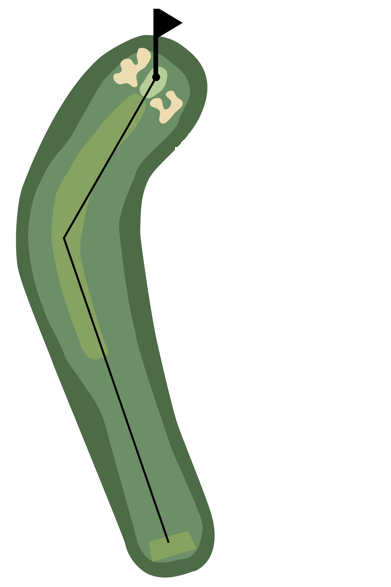
Hole 1 – Par 4, 397 yards: The Tactical Start
The opening hole, adjusted for grandstands, presents an immediate strategic choice. Players can bravely attempt to fly over the trees for a shorter approach or play safe around the dogleg with a hybrid or iron. It’s one of the few holes where trees are truly in play, dictating conservative choices in foursomes, while four-ball might see one player unleash a bold drive. A narrow green entrance further encourages thoughtful play.
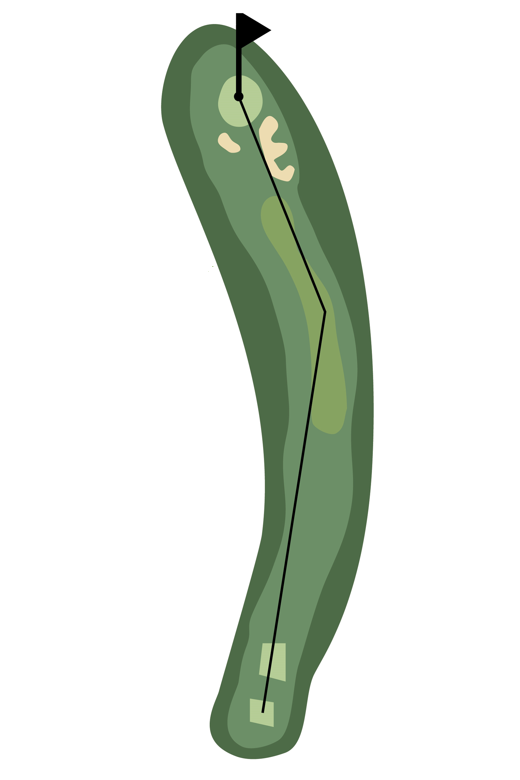
Hole 2 – Par 4, 389 yards: Elevated Aspirations
A short, straight par-4 offers another early birdie chance. The elevated green means players often lay up, aiming for a full, controlled shot into an unseen flag. Avoiding the right rough is key, as side-hill lies can prevent the precise spin needed. This hole demands distance control and imagination, as the visual of the target is obscured.

Hole 3 – Par 3, 210 yards: The Lengthened Challenge
Originally shorter, this par-3 was extended significantly for the 2002 U.S. Open. For the Ryder Cup, pin placements could soften the blow, especially if organizers want to encourage birdies. The key will be managing the length and green undulations, particularly when a back-left pin demands a precise, attacking shot.
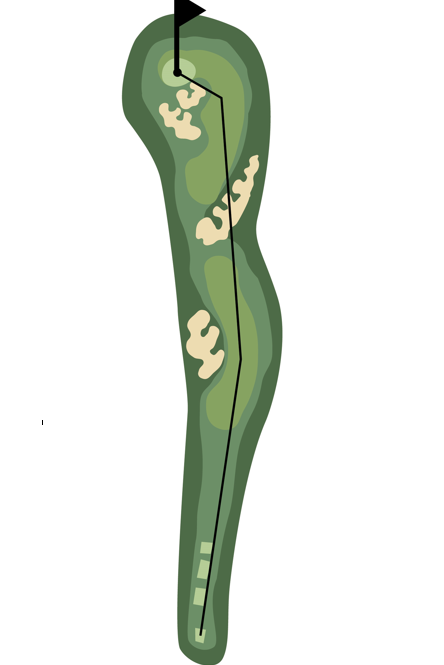
Hole 4 – Par 5, 517 yards: Amateur`s Bane, Pro`s Boon
This “famous” short par-5 will likely play like a par-4 for the pros, making it a prime birdie opportunity. While a nightmare for amateurs due to a deep glacier bunker and elevated fairway, professionals can easily carry the hazards. The challenge here is the green, which slopes front-to-back, penalizing over-clubbing and potential run-offs. Three birdie holes in the first four? The start could be fiery.
The Mid-Course Gauntlet: Where Bethpage Shows its Teeth
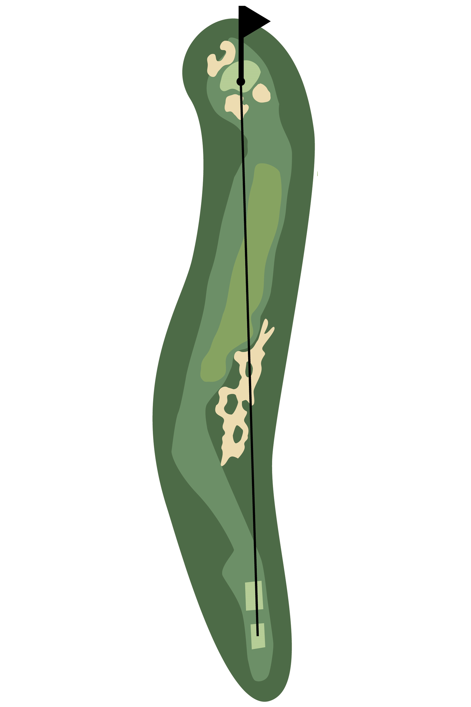
Hole 5 – Par 4, 478 yards: Pine Valley`s Ghost
Inspired by Pine Valley`s 16th, this is where the Black Course truly begins to bare its fangs. A demanding tee shot requires flirting with a large sandy area on the right to avoid being blocked out by trees on the left. The elevated, undulating, and heavily bunkered green demands a precise approach. A par here will feel like a birdie.
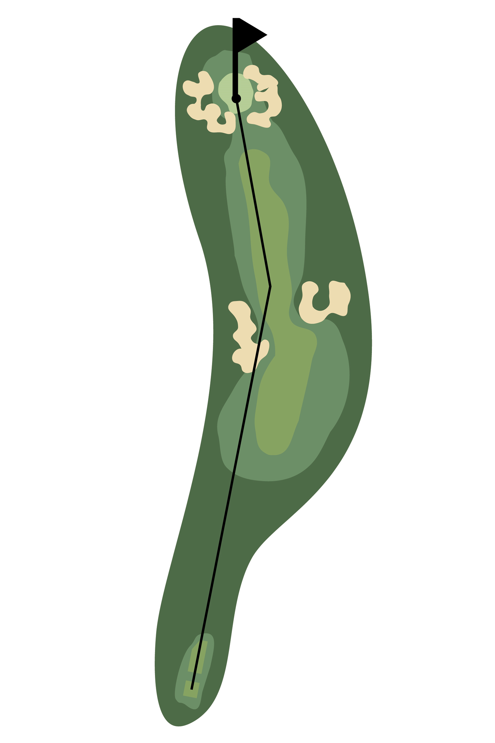
Hole 6 – Par 4, 408 yards: The Decision Point Drive
This short par-4 is all about the tee shot. A dramatic drop after 280 yards presents a dilemma: lay up short of the drop, leaving a longer approach, or boldly drive through a narrow slot for a mere “flip shot” into a green encircled by bunkers. The choice will define the hole`s difficulty.
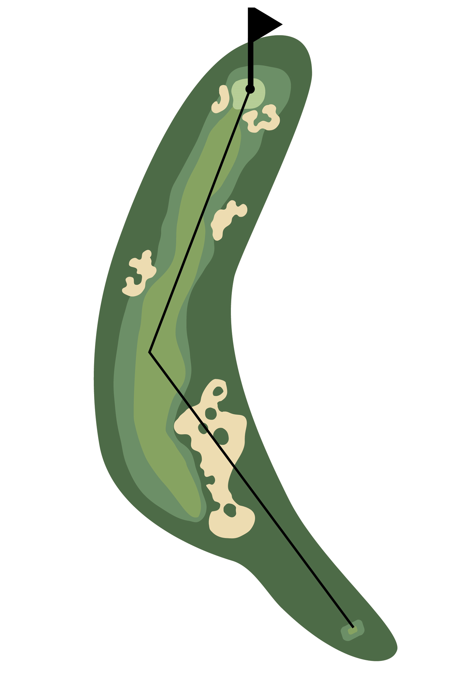
Hole 7 – Par 4, 524 yards: The Whining Hole
Once a par-5, this hole was controversially converted to a par-4 for the 2002 U.S. Open—a move famously intended to make players “whine about this hole, so they won`t whine about the whole course.” Its sharp dogleg and encroaching trees demand an aggressive drive flirting with the left side to shorten the approach. It`s a testament to Bethpage`s no-compromise design.
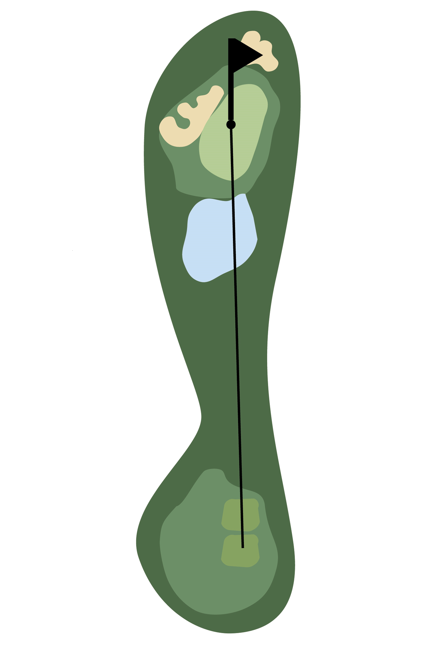
Hole 8 – Par 3, 210 yards: The Lone Water Hazard
The only hole on the course with water, this downhill par-3 offers varied challenges based on pin position. A back pin demands a controlled release, while a front pin risks spinning the ball into the water. This hole`s character will shift daily, promising excitement and potential heartbreak.
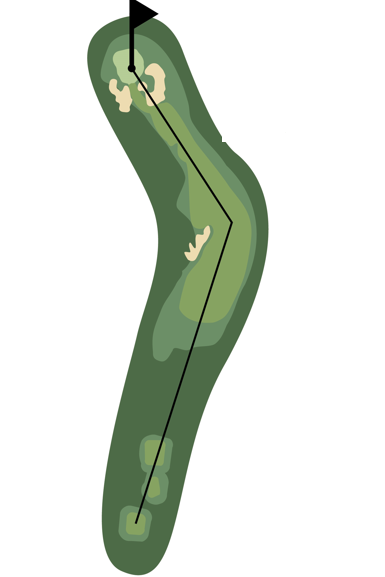
Hole 9 – Par 4, 460 yards: The Bunker on the Turn
Another dogleg, this hole`s strategy revolves around a massive bunker guarding the turn. Players must carry or skirt this bunker to gain an optimal angle into a low-profile, well-protected green. It demands both distance and accuracy, setting up a demanding finish to the front nine.
The “Meat” of the Course: A Relentless Sequence (Holes 10-12)
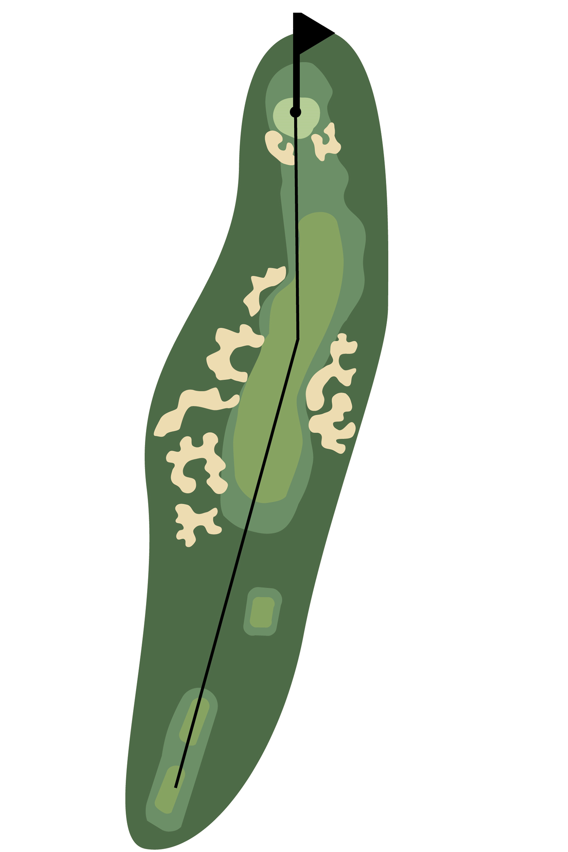
Hole 10 – Par 4, 502 yards: Sergio`s Infamous Battleground
This hole gained infamy at the 2002 U.S. Open when harsh conditions made the fairway virtually unhittable for some, leading to a memorable, if ill-advised, gesture from Sergio Garcia. Though the fairway has since been extended, a series of flanking bunkers still demand a precise, long tee shot. It`s the start of Bethpage`s most demanding stretch.

Hole 11 – Par 4, 435 yards: Shifting Winds, Shifting Fortunes
Turning in the opposite direction from the 10th, this hole`s character can dramatically change with the wind. An angled layout and an elevated back pin position offer organizers flexibility to dial up or down the difficulty. Players will need adaptability and precise approach shots to navigate its nuances.
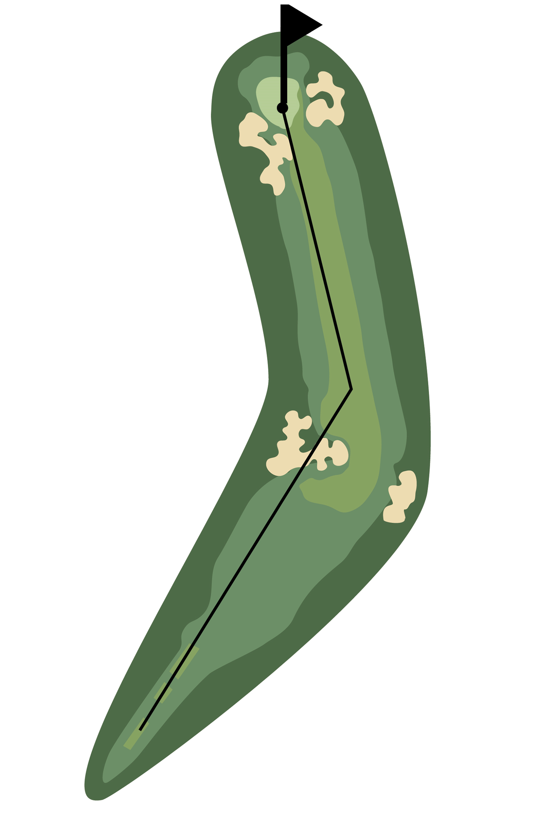
Hole 12 – Par 4, 496 yards: The Driver`s Mandate
This is arguably the only hole where a powerful driver is truly mandatory, requiring a 280-yard carry over a cross bunker. While modern professionals may not be “intimidated” as their predecessors once were, any slight pull or lack of distance could find them in the sand. It`s a test of both strength and nerve.
Strategic Respite and Hidden Traps (Holes 13-16)

Hole 13 – Par 5, 608 yards: The Birdie Beacon
After the preceding gauntlet, the 13th offers a welcome birdie opportunity. Despite its length and repositioned tee, a cross bunker well short of the green is unlikely to trouble players who find the fairway. A relatively simple green promises scoring chances, crucial for momentum in match play.

Hole 14 – Par 3, 161 yards: The Easiest, Yet Deceptively Tricky
Hailed as the easiest hole on the course, this short par-3 still holds a hidden challenge: a narrow “tongue” in the front-left of the green. While most of the green will offer birdie chances, accessing that specific pin position is exceedingly difficult, turning a seemingly simple hole into a potential tactical conundrum.
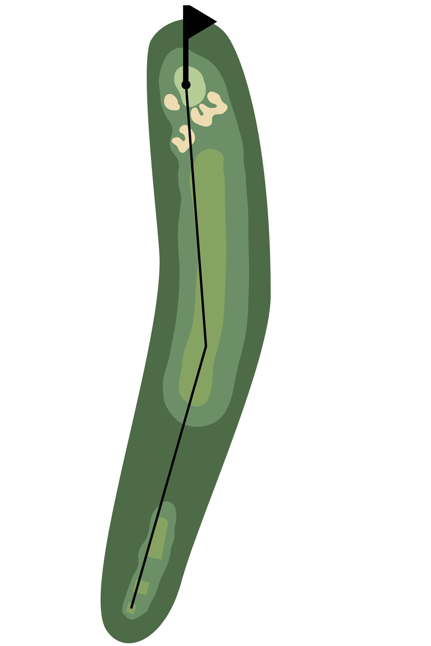
Hole 15 – Par 4, 477 yards: The Course`s Hardest Test
This is arguably Bethpage Black`s toughest hole. While fairway bunkers are absent, allowing for powerful drives, the second shot to a highly elevated, two-tier green is brutally demanding. Missing right sends the ball down a steep slope, making recovery a Herculean task. Precision into this small, critical target is non-negotiable.
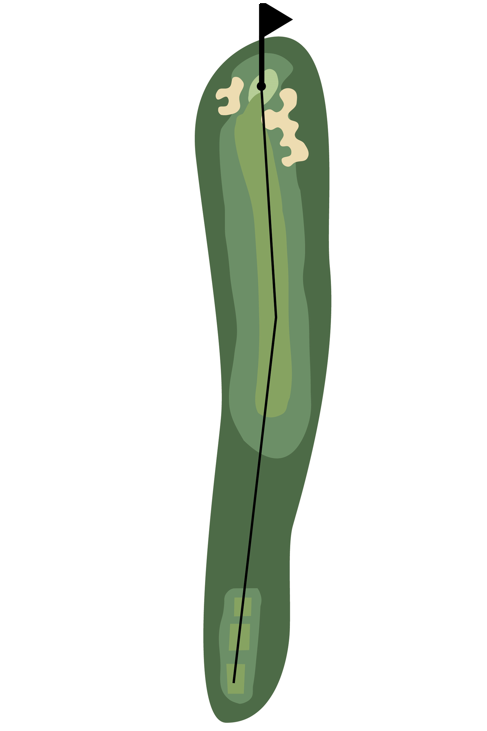
Hole 16 – Par 4, 539 yards: The Visually Deceptive Drive
The green on this long par-4 is guarded by two large bunkers on the right, creating a visual trick that often tempts players to hit away from their ideal line. To access difficult pin positions, particularly on the right side of the green, a precise drive to the left side of the fairway is essential. It`s a battle against perception and precision.
The Final Stretch: Pressure Cooker Moments

Hole 17 – Par 3, 179 yards: The Muscle-Tightening Drama
A “dramatic, wonderful” par-3, the 17th is designed to tighten muscles and fray nerves. Its two-tier green, heavily bunkered and not particularly deep, punishes any mis-struck shot, whether long or short. Should matches come down to this point, the pressure will be immense, making every swing a potential swing in fate.

Hole 18 – Par 4, 411 yards: The Grand Finale Birdie Chance
The closing hole offers a genuine birdie opportunity, but it`s far from a gift. Bracketed by numerous bunkers, and with a long left bunker influencing club selection, players must think carefully off the tee. A heavily bunkered, elevated, and small green demands a precise approach. As and have noted, this is precisely the kind of strategic, high-pressure finish they relish. It`s a fitting culmination to Bethpage Black`s relentless design.
The Enduring Legacy of the Black Course
Bethpage Black is more than just a golf course; it`s an experience. Its public access status, combined with its championship-level difficulty, offers a unique narrative in professional golf. For the 2025 Ryder Cup, it provides a stage unlike any other: a “penal” course softened slightly for the sake of excitement, yet still demanding unparalleled strategic acumen from the world`s best.
The subtle alterations, the strategic bunker placements, the elevation changes, and the sheer length of many holes will test every facet of a player`s game. As Team USA and Team Europe battle for supremacy, Bethpage Black will not merely be a backdrop; it will be an active participant, challenging minds, breaking spirits, and ultimately, crowning champions who have conquered one of golf`s most formidable arenas. The warning sign at the first tee will have proven its worth, yet again.





